Interview with Sue Clancy
On art as exploration and response, coming out in the Bible Belt in the 80's, and joy in spite of everything.

I was first introduced to Sue Clancy via a follower recommendation, and thus had no idea the delight that awaited me when I typed her name into my search bar. Sue is a visual artist and illustrator whose work has been exhibited in public institutions and private collections around the country. Her fine art is represented by Caplan Art Designs, The Aurora Gallery, The Joseph Gierek Fine Art Gallery, and The 23 Sandy Gallery.
On her Substack A.M. Sketching, Sue shares her mourning routine of eating breakfast and creating whimsical pieces of art, often accompanied by personal musings and reflections. As a sucker for cute and goofy animal art, I immediately fell in love with the drawings and illustrations in her sketchbook—but I also found myself admiring the snippets of her philosophy that accompany them. Her mindset is so quietly, peacefully rebellious. It is a refusal to take part in today’s growing culture of judgment and anger. Sue finds beauty in the ordinary, meaning in the everyday, and makes it magical.
I reached out to Sue and found her just as delightful as her sketches. We discussed our cats, navigating queerness in the midst and wake of religious fundamentalism, and the importance of having (and being!) older LGBTQ+ role models. I could go on and on about Sue, but I’ll let her speak for herself in these insightful and thoughtful interview responses, interspersed with her visual work*.
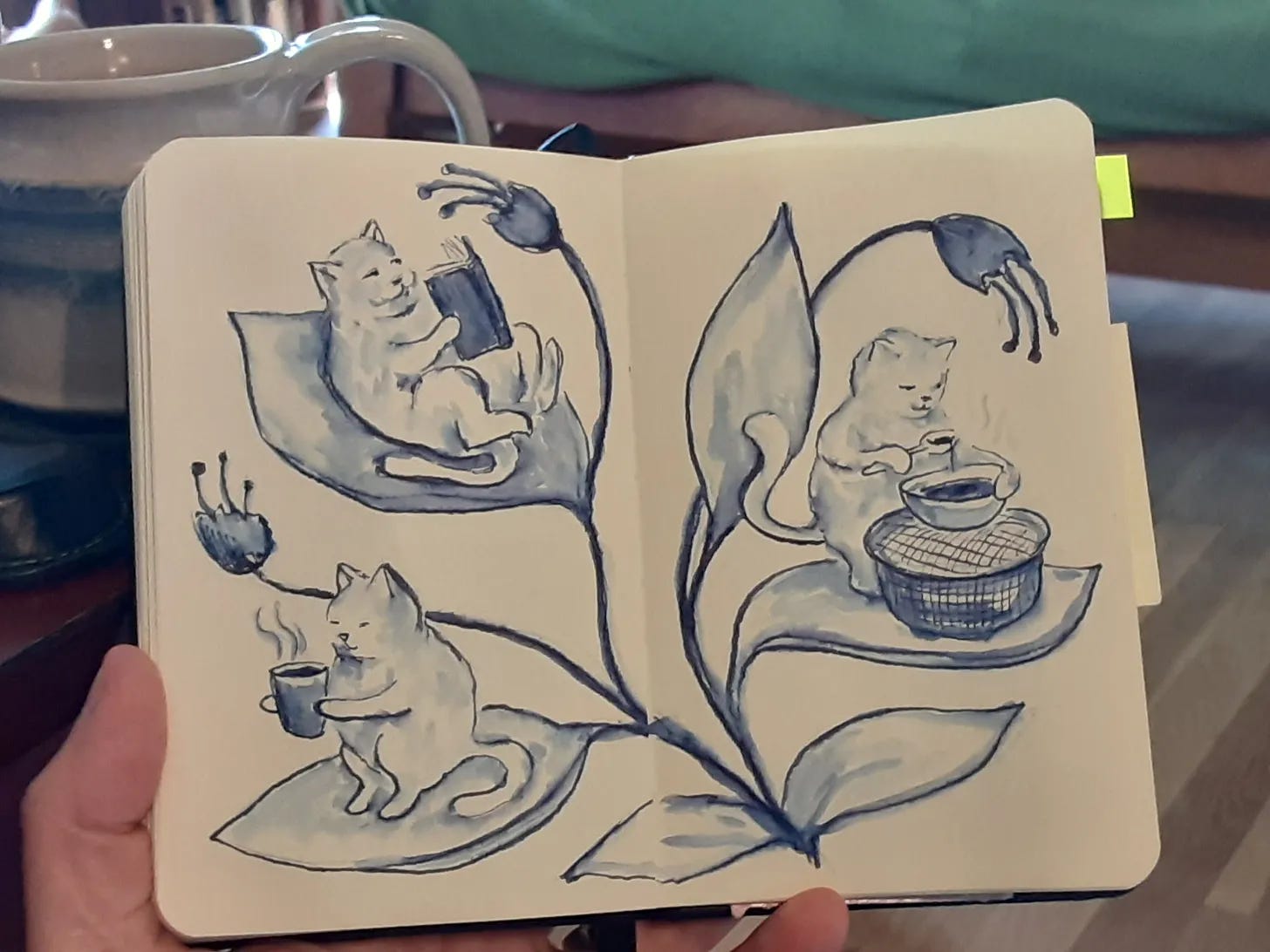
What first inspired you to draw? What inspires you now?
Some of my earliest childhood memories are of sitting at my grandmother's kitchen table drawing. She kept a chipped ceramic cup full of pens and pencils next to a stack of paper for me to use and use them I did because the world was a visual place for me as a deaf kid. So I would often fold these sheets of paper into "book pages", carry them in my pocket and I'd try to draw the animals and other things I saw in my public library books or in the world. I liked to climb grandma's pear tree with my paper and a pen and make my "osserpervations" [little deaf kid speak for "observations"] of birds, bugs, cats, dogs, plants and anything else in the neighborhood. I began to write and illustrate my first "book" at age 6 or 7 which I titled "The Be Quietness Book" in which I described, with words and drawings, things that made noise. I lived primarily with my grandmother but had to visit my biological parents one weekend per month. In my biological parents house I was always in trouble for making noises. As a deaf kid I had no clue what made noise and what didn't so I took careful notes in my book in order to try to figure it out and hopefully be less often in trouble. It didn't work as I was still in trouble all the time at my biological parents house. But grandma liked my work on my book. I didn't get hearing aids until I was 8 years old at which time noises became slightly less mysterious.
Nowadays I'm still using my creativity to visually explore and respond to my world using words and images. Currently I'm studying nonsense literature (think Edward Lear and Lewis Carroll) and it's past use as a way to protest against the linguistic abuses by oppressive regimes that use tactics like gaslighting, DARVO etc. The playfulness of nonsense literature helps us remember that meanings of words and images are collaborative - we make meaning together with our reality of shared, lived, experiences. Meaning and understanding is not dictated by "authority" - they may try to dictate things but lived reality usually wins.
⠀
What does your artistic process look like? Do you find it feels segmented from your daily life, or does it integrate itself pretty seamlessly?
It is my life!! It's a seamless part of my daily life. I start most mornings by drawing in my sketchbook during breakfast. My Substack is called "A.M. Sketching" and most Friday's I share what draw (and what inspired it) during the week. Generally my routine is like this: I draw in my sketchbook while having coffee and breakfast. After breakfast and sketchbook play are done I go to my studio, a room in our house, and do painting and drawing work on easels. I break for lunch. Back to work. Later in the afternoon I'll take a "book break" and read for 20 minutes or so. Back to work. Then I break for dinner followed by a rambling walk with my wife. Then I read print books for 30 minutes or so before bedtime. I write my Substack, check my email, perhaps some social media somewhere within the day but I try to minimize random scrolling. I say "general routine" because it doesn't always go like that -but that's my preferred routine for a creative day. No matter what's happening I usually have pen and paper nearby so I can be ready when an interesting thought or observation happens. Even when my day is full of allegedly non-creative things, like physical therapy or grocery shopping, I'm prepared for creativity. Life is creativity and creativity is life.
⠀⠀
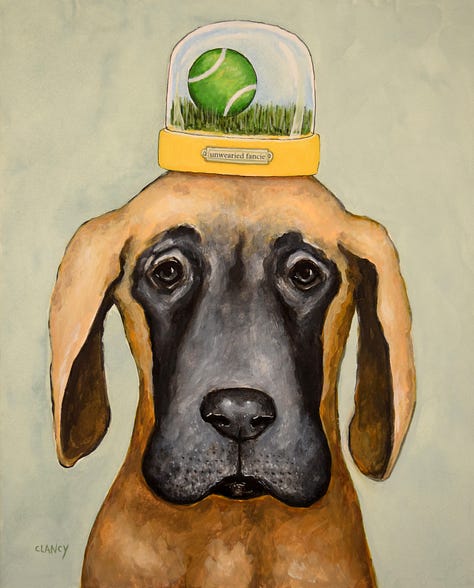
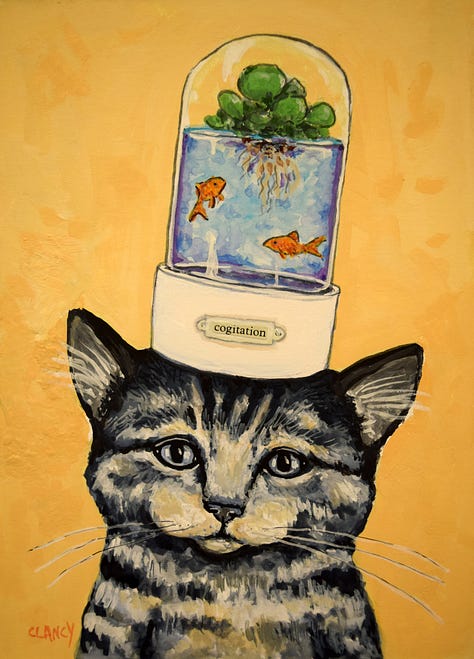
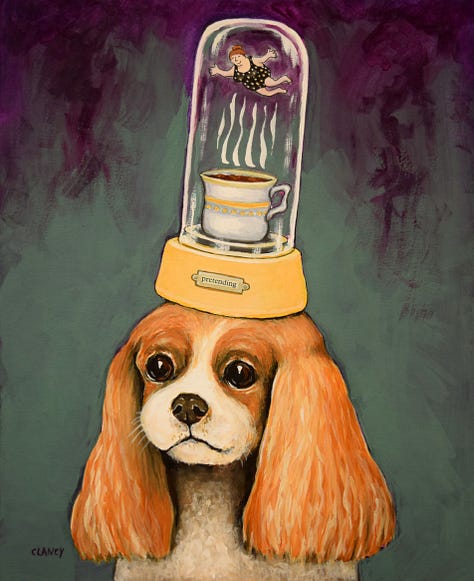
Are there any locations that inspire your creativity more than others?
No, anywhere is capable of inspiring me - I was fortunate to have a professor in art school who taught that inspiration is something that comes from inside us, it's a way of looking and exploring, it's an attitude of openness and curiosity, so that anything - even your sock drawer - can become a source of artistic inspiration. That said public libraries and bookstores, my book shelves at home are treasure troves of inspiration for me! The interplay of reading books and then responding via writing words and drawing pictures is enchanting to me and reliably gets my creative juices flowing!
⠀
How has your art evolved over the course of your life?
OMG! How much time do you have for a 1000 page reply?! Ha!! I'll try to keep it short: my creative thinking has morphed slowly over time from strictly observations/documentations of the external world to observations/documentations of my internal world and then to a collaborative dance between what is in my external/internal worlds and what could be. As I've gotten older my emphasis is increasingly on imagination. Specifically on imagining a kinder more gentle and empathetic way of living and being.
If your question is more about art techniques, well, I've gone through all sorts of phases and combinations of phases: chalk/pastel drawing, digital art, print making (screen print, lithography, hand carved block printing), handmade paper making, hand book binding, fabric art, costume design, welding/metal sculpture, ceramics, ceramic sculpture, paper sculpture, mixed media collage, drawing, painting, cartooning, writing poetry and short stories... I've used whatever methods helped me put my thoughts and feelings into tangible forms. I practiced the various techniques and methods until I could do the technique easily enough that I could focus on expressing myself.
I've worked professionally as a graphic designer, illustrator, photographer, press pre-production technician, biological/zoological illustrator, sign maker, children's book writer/illustrator, costume designer and production manager, editorial cartoonist, cartoon strip creator, fine artist, lecturer... I'm sure I've forgotten something. I've been doing something creative for both fun and money since I was 15 years old. I started exhibiting my fine art in art galleries at age 18 and have worked with art galleries constantly since then. One of the galleries I worked with for over 30 years until the owner retired. I'm still working with galleries as a fine artist. I'm still doing my kids books and other projects as an author/artist. Come to think of it digital art, ceramics and metal welding are the only things on the above list that I've almost completely stopped doing.
⠀
⠀
What recurring themes do you notice in your art?
Animals, books, food, drink, words, music, plants, trees, flowers, patterns, whimsy, word play, good mental health, love, delight.
⠀
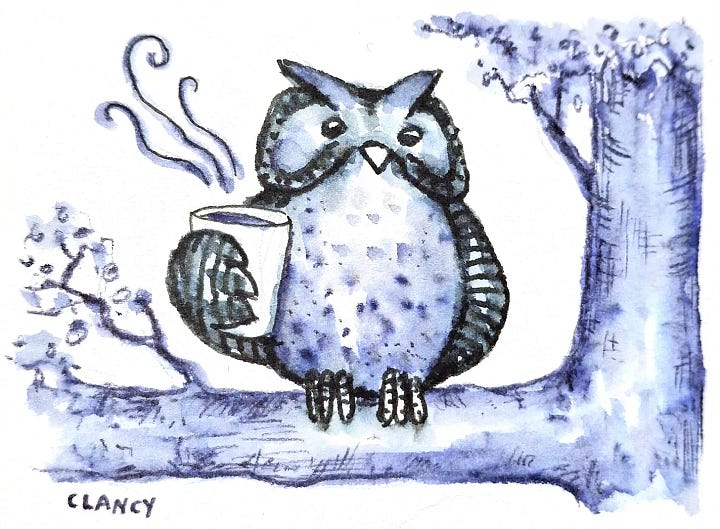
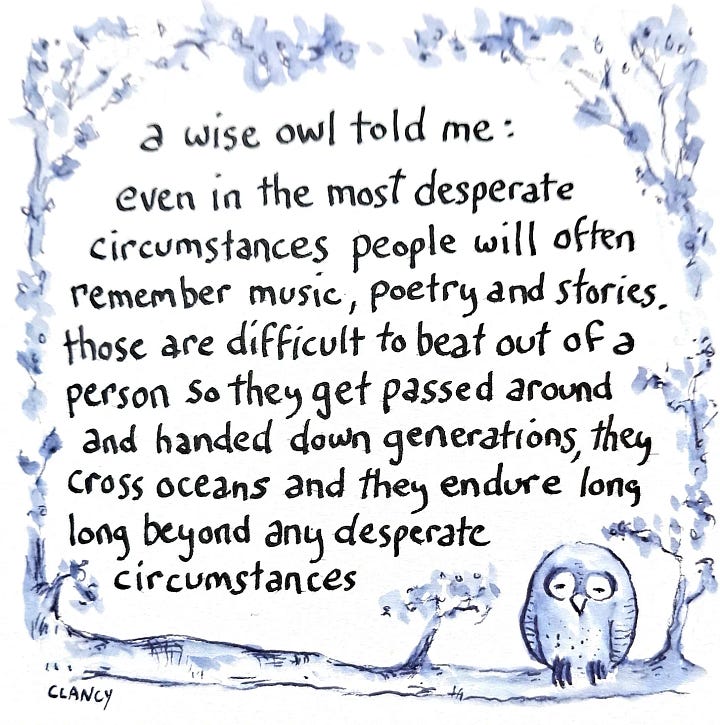
Do you have any pieces/projects that have really stuck with you throughout the years?
Doing the illustration and collecting the text for "Dr Bob's Emotional Repair Program First Aid Kit" has affected every aspect of my creativity and my relationships with myself and other people. I did the book illustrations in the early 1990's as stand-alone accompanying art for display during Dr. Bob Hoke's lectures. Much later, in 2012 or so, at Dr Bob's request, I combined my art and his lecture notes into book form, both ebook and printed, which he used in his psychiatric practice. All of that work revolutionized my thinking. Even now I keep a printed copy of this "first aid kit" in my bathroom and refer to it often. If there's anything I'm proudest of having accomplished it's this.
Here's a link
https://store.bookbaby.com/book/dr-bobs-emotional-repair-program-first-aid-kit1
⠀
⠀
Do you consider art to be a hobby, or a calling? Why?
I consider art to be as much a part of me as my lungs and heart. If I go too long without making or at least encountering art I get "the bends" like they talk about in scuba diving.
⠀
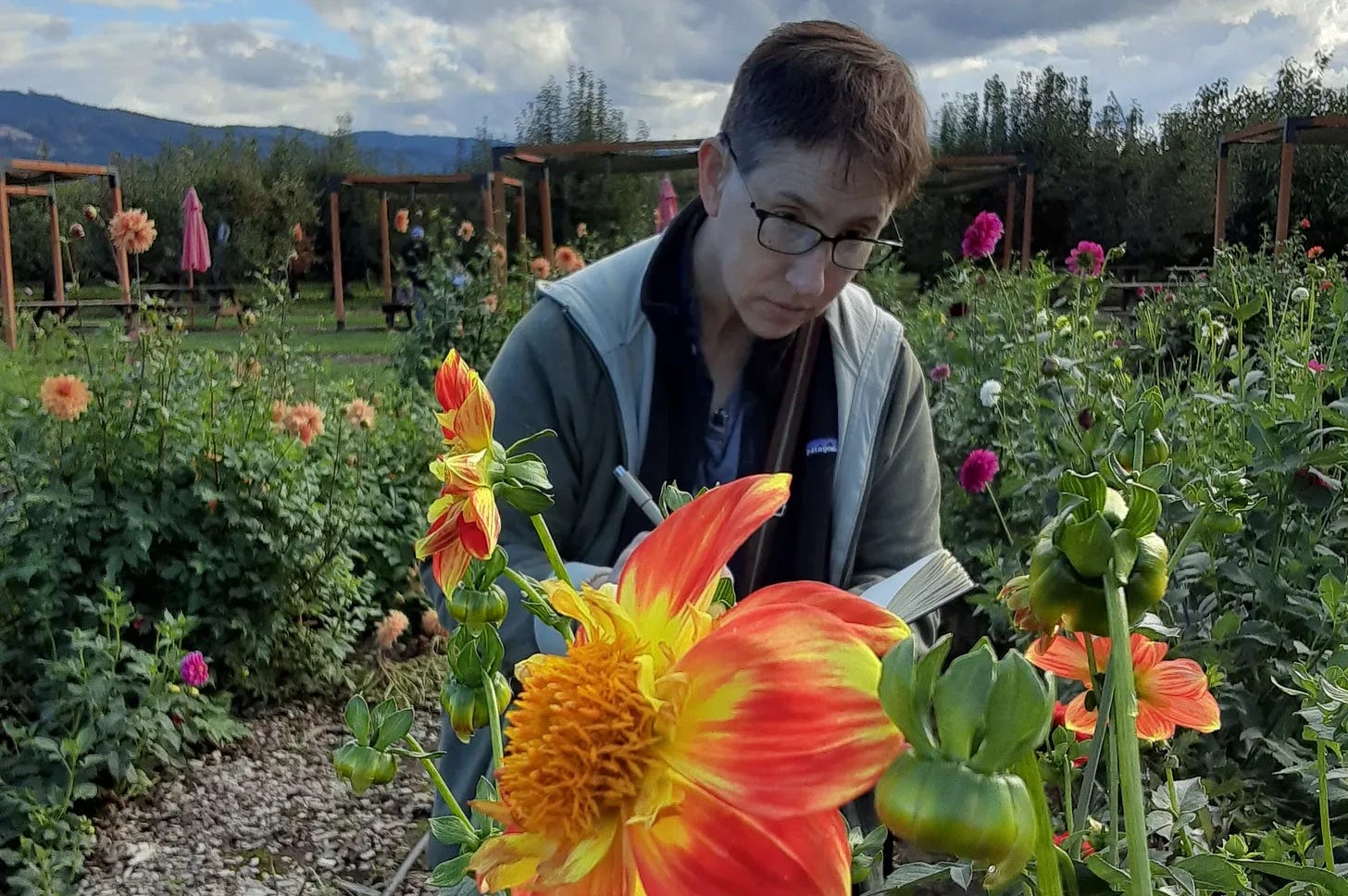
What are the biggest life lessons you’ve learned/reinforced through your art?
In a painting the perception of one color is often influenced by the color next to it. It's okay to "not know" whether putting that color there will work or not and try it there and then change it if it doesn't work. What I paint first often doesn't seem correct, not exactly what I envisioned when I began, so I adapt to what is there now and try to help it become something related to my vision that's good enough. I learn about my thinking in this process of doing and redoing. My process is akin to the idea of rewriting; you do a "dump draft" where you get your idea out there and then in the subsequent "rewriting" phases you shape it. I firmly believe that 90 percent of being an artist is knowing how to fix mistakes or how to accept/roll with the "happy accident" and adapt. 10 percent of creativity is just being willing to show up and start something. Another 10 percent (part of the 90 percent) is the willingness to be patient and adapt to what is. I find this is true of personal relationships too.
⠀
⠀
I’m queer, and my queerness plays a large part in my writing. Do you find the same in your own art?
Yes!! Absolutely!! My art is rooted in my biography, in who I am as a lesbian, as a Deaf person, as a person who grew up in the conservative Southern Baptist Oklahoma region to a biological family with a mentally ill mother whose personal religious extremism fit in with the extremely religious geographic region. Coming out lesbian in the 1980's led to being kicked out of my biological family (my grandma died when I was 13) at age 15, being a homeless gay youth, then later being informally adopted by the absolutely amazing Hoke family.... all of that plays a huge part of my artwork and life today. To give you an example: as a homeless 15 year old I handlettered and illustrated a baker/deli daily menu board in exchange for food. Today I handwrite/handletter my artwork on an almost daily basis.
Throughout my life have used art making to cheer myself up during hard times, as a way to care for my own mental health. I lean on my artwork to celebrate and care for myself and other people around me now. I pay attention to my daily life, to the bioregion I live in (the Pacific Northwest) and to what's going on culturally both locally and around the world. I have a quote thumbtacked to my studio wall that says "The artist does not simply hold a mirror to society. If the world now is greedy the artist must be generous. If there is war and hate the artist must be peaceful and loving. If the world is insane the artist must offer sanity and if the world is becoming a void the artist must fill it with their soul." My paraphrase of Robert Chatham.
Back in the late 1980's when I was living in Oklahoma I came out and got involved with my college's gay/lesbian alliance (the rest of the LGBTQ+ alphabet hadn't been recognized yet). The college wouldn't allow our 6 to 8 member student group to meet anywhere on campus, because we were homosexuals, so we joined the states local chapter of the HIV/AIDS activist group ActUP which met in a nearby city. That group taught me a lot about responding to bullies with humor/careful placement of my attention. I learned from ActUp the importance of kindness and love as a first response when facing bullies. For example when encountering a bully/victim situation to focus primarily on helping the person who got harmed - later you can shout at/report the person who caused the harm. This response deprives the bully of the attention they want and instead gives attention to the peaceful person. More generally, we advocated, in daily life, to build/create what you *want* in the world. Don't just react to or focus on the problems. It's not what happens to you that's the important part. What's important is your response and what you do next. That concept - and my later work illustrating Dr Bob's Emotional Repair Program First Aid Kit - all play a huge part in why I create what I do and I got there from my queerness.
⠀
Do you have any preferences for the types of visual art you create (pencil/pen/watercolor/acrylic/etc.)? Are there any you avoid?
I currently prefer fountain pens, dip pens and inks, gouache paints, acrylics. In the past collage and hand bookbinding would have been high on the list too - but it's especially hard to do collage or bookbinding with your leg elevated in a cast so over the last year drawing, painting and writing with pens, inks and paints have been my go-to rather than collage.
As for art techniques I avoid: anything using a computer. I find Artificial Intelligence especially abhorrent and have a deep retching revulsion to A.I. images and the way A.I. can be so easily used to steal from other humans.
Back in the late 1980's early 1990's when computers and digital art and digital photography were new I was quite interested - keenly active in using it - but I've fully recovered from that digital madness now. I'm even minimizing my social media use nowadays.
⠀
Who’s an artist you admire, and why?
I have large a number of artists that I admire and I define the term "artist" here to include writers, illustrators, sculptors/painters, book artists, fiber artists, poets, musicians and dancers. So in no particular order they are: Tom Robbins, Maya Angelou, Edward Lear, Oscar Wilde, Edward Gorey, Twila Tharp, Joan Jonas, Louise Bourgeois, Mary Oliver, Eric Carle, Pete Seeger, Billie Letts, Andrea Gibson, Sharon Sala, Ursula K Le Guin, Shereen LaPlantz, Kurt Vonnegut, Ai Weiwei, Sinead O'Connor, Tomi Ungerer, Maurice Sendak, Beverly Cleary, Janis Ian, Joy Harjo, Jaune Quick-to-See Smith, Shaun Tan, Maud Lewis, Jacob Lawrence, Michael Rosen, Chris Roberts-Antieau, Maria Kalman, N.K. Jemisin, Kelly Barnhill, Jill Badonsky.
I've probably left out somebody... but the common thread among almost all of them, why I admire them, is that they overcame adversities and, via their art, transformed those difficulties into something beautiful or uplifting. They didn't let the bad things in life stop them from their creativity - in fact it became/becomes fuel for their work. And *despite* personal adversity - tragedy even - they've generously given themselves and the world the gifts of their creativity. Also, they reflected their own voice, heritage, life experiences within their artworks persisting in their expressions in spite of pressures to conform or otherwise diminish their creative spirits.
⠀
Do you think we all have an artist inside us? And if so, what do you think it is that holds some people back from their creativity?
I think we're all born creative. Every little kid is creative and inventive with things in their world, using items in surprising, unorthodox, creative, ways. A kid will often sing, make rhythmic sounds, draw and dance before they've seen or been taught anything about singing, rhythm, drawing or dancing! They'll have their own sense of fashion and will wear a cape, a helmet or a tiara with a tutu (or whatever) and it won't bother them a bit that no one else in the room is wearing a cape or tutu! What holds older people back from their own creativity is self-consciousness, that same phenomenon that happens when a young kid starts trying to "fit in" with the other kids and stops wearing a cape with a tutu. Teenagers and young to middle-aged adults sometimes have bad cases of the "fit-in's" which often inhibits them in personally enjoying art or even lunch because they're too busy looking around to see if they're "doing it right" or "fitting in" or "keeping up with the Joneses". It's a serious undertaking to practice hearing your own inner creative voice while still being peacefully in cohabitation with people around you. It's a challenge to, metaphorically, allow yourself to wear a cape with your tutu again and simultaneously be aware of the world.
⠀
What are the biggest struggles you’ve faced recently in your artistic life?
In January of 2024, I horribly injured my ankle. I still had previously scheduled exhibitions and art projects due during 2024 so I had to figure out how to paint flat on my back with my leg elevated in a cast. My wife was a wonderful help - she found me a small easel that could rest on my stomach and she'd wash out my brushes for me! Later as I got out of the cast and into physical therapy (which I'm still in as I write this) I've had to accommodate my leg/ability to stand and continue to produce my artwork. But I can stand for short lengths at my easel and wash my own brushes now! I've had to constantly adapt my way of working creatively while also healing physically. It's been a struggle on several levels.
⠀
If you could sum up your artistic life in three words, what would they be?
Living, loving, exploring
⠀
⠀⠀
What are five things in your life that bring you joy?
Family, friends, nature, art supplies, books
⠀
What projects are you currently working on?
A one-person fine art exhibit inspired by the poem 'The Owl and the Pussycat' by Edward Lear.
Also, some fine art commissions - paintings people have requested for particular places in their lives.
As a personal challenge I'm in the process of reading, over 1000 consecutive days, 1 essay, 1 short story, 1 poem per day. I'm on day 902 currently!
I'm the artist in residence for a locally owned stationary store called Eryngium Paperterie
https://www.eryngiumpapeterie.com/
I'm illustrating and writing a weekly Substack called A.M. Sketching.
For Storyberries.com, a book publisher distributor based in Australia, I'm writing and illustrating a series of original children's books. So far I've done 24 books. I'm currently working on a new story that will hopefully be available later this year. These are free stories available all over the world as ebooks.
https://www.storyberries.com/author/sue-clancy/
What about the future are you excited for?
I'm excited about all of my own projects which are already scheduled through 2026 - so I'm keen to see how those flow. I'm happily active in my local art scene - many excellent artists, writers and theater groups here! More generally I'm excited about the new fiction genre Hopepunk and I want to read more writers within that genre. I'm also excited about a new-to-me form of activism called "Imagination Activism" and I want to participate more than I already do. I'm avidly following what the "Freedom Cartoonist" organization is doing and the work Liza Donnelly and Ann Telnaes.
If you, or your readers aren't familiar with Hopepunk or Imagination Activism or the Freedom Cartoonist org here are some links:
Hopepunk:
https://www.vox.com/2018/12/27/18137571/what-is-hopepunk-noblebright-grimdark
Imagination Activism:
https://www.moralimaginations.com/imaginationactivism
Freedom Cartoonist:
https://freedomcartoonists.com/
⠀
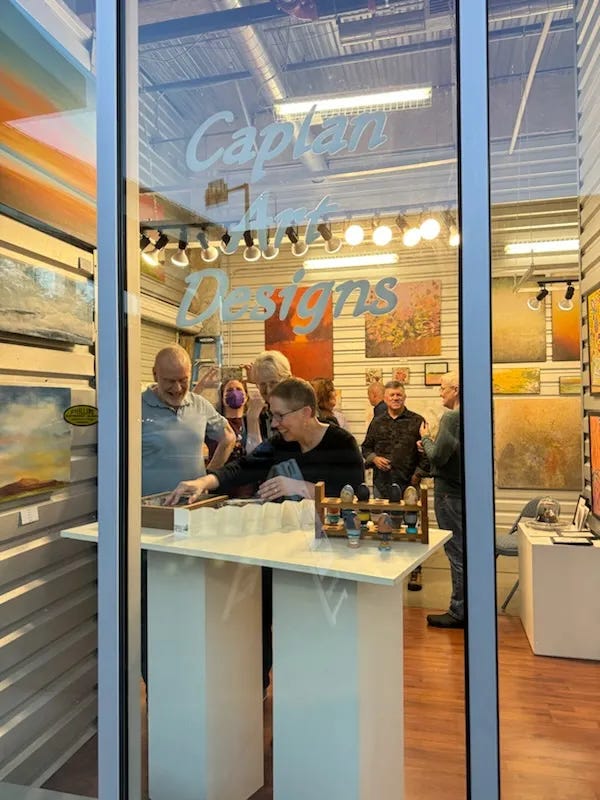
If you could tell all artists one thing, what would it be?
Creating art, creating anything by hand nowadays - even a homecooked lunch - is an act of rebellion. So is reading, listening to or viewing the creativity of other humans. When you aren’t doing something creative with your own hands then read, listen and look at other peoples' creativity! Embrace original creativity in all of it's forms! Be curious! Fall in love with things in life via art! Creativity is the most essential thing in the world! Humans do creative, regenerative, collaborative things in the way that songbirds sing, and fish swim, it is an attribute of being a human being. Nature itself is creative, regenerative and collaborative. To create is to participate in being alive and living!!
Some people will tell you creativity - art - doesn't matter, it doesn't "pay", it's frivolous, etc... but they lie and they're manipulating your perceptions!! If art doesn't matter why are creative people and the art, books, etc. that they create so often the targets by abusers for control, removal, suppression or censorship? Why are homecooked lunches made by people you can see so often dismissed as "inferior" to mass-production meals made by monolithic corporations?
Art and creativity fucking matter - and abusive people and corporations are scared of it!!!
So practice staying on your creative path no matter what! If you get knocked off your path claw your way back asap! Create something every day! If you can't create then read! Find ways to keep your mental/creative life interesting and sustainable for yourself. Focus on listening to your inner voice and creating the best reflection of it that you can make despite any difficulties. Become okay with the messy uncertainty of the creative process. Defiantly be fully yourself and fully alive! As one of my favorite writers Tom Robbins says (and I paraphrase) "Joy in spite of everything. Not just mindless joy but joy in spite of everything. Recognizing the inequities, suffering and corruption and all that but refusing to let it rain on your parade. Joy in spite of everything."
I hope you found this interview inspiring and uplifting; I certainly feel better any time I dive into Sue’s mindset on life and the world around us! In times as turbulent and frightening as these, it helps to remember there are others out there who refuse to listen to the hateful rhetoric, who stand their ground in peace and self-assurance. Like the rest of these people, Sue Clancy serves as a beacon of hope in the darkness.
Thank you Sue, for being that light—and thank you for a wonderful interview! Readers, please consider subscribing to and supporting Sue on Substack and her personal website.
⠀
-Allie
*all images and artwork used in this interview were sourced from sue clancy’s website and substack, with her permission. when possible, all images link back to the post from which they came. some images were automatically cropped by substack’s gallery feature.
Introspective Ink is an entirely reader-supported publication. If you loved what you read and want to support my work, consider becoming a free or paid subscriber. If a monthly subscription isn’t in your budget, consider donating a few dollars through Buy Me a Coffee.





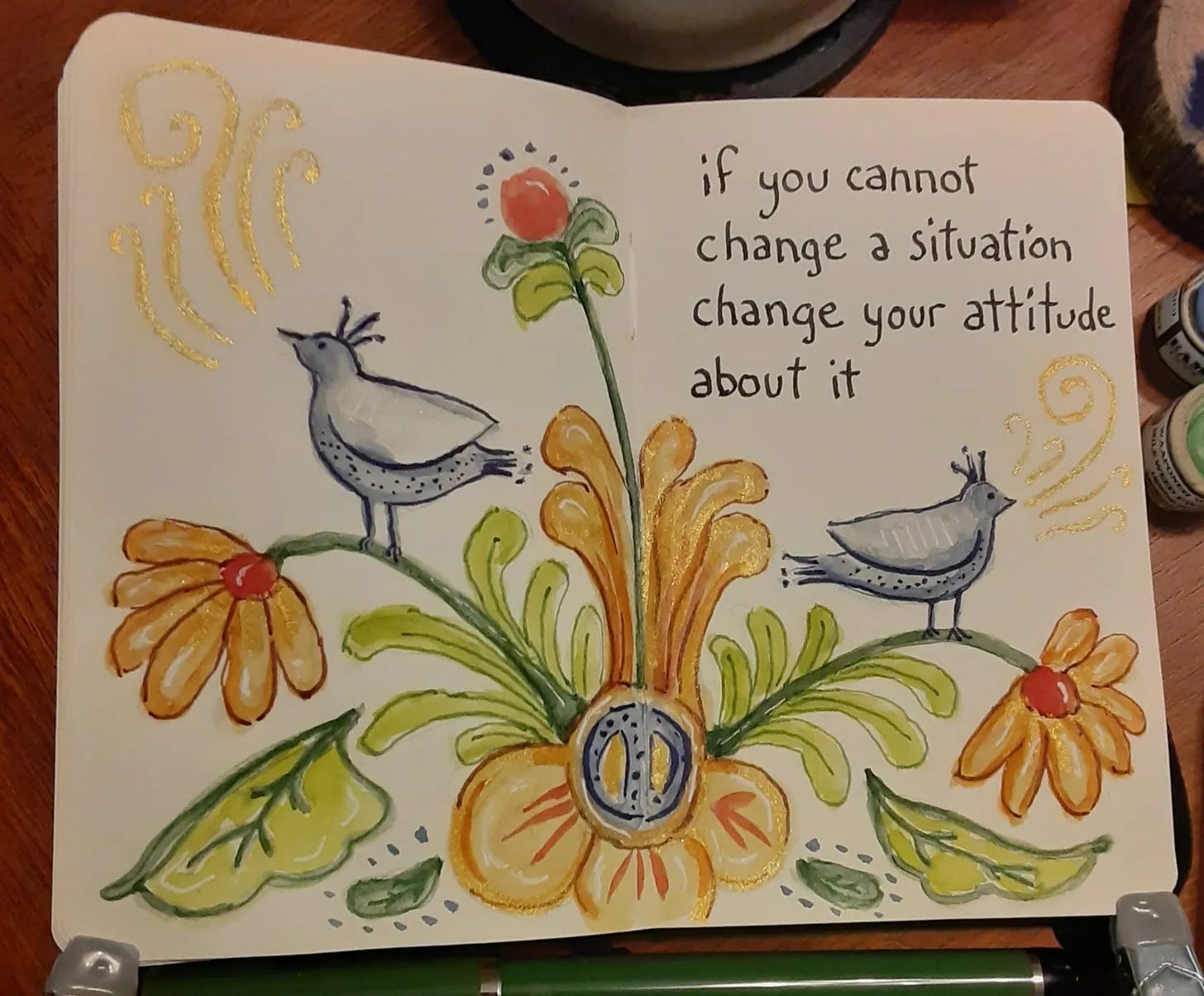

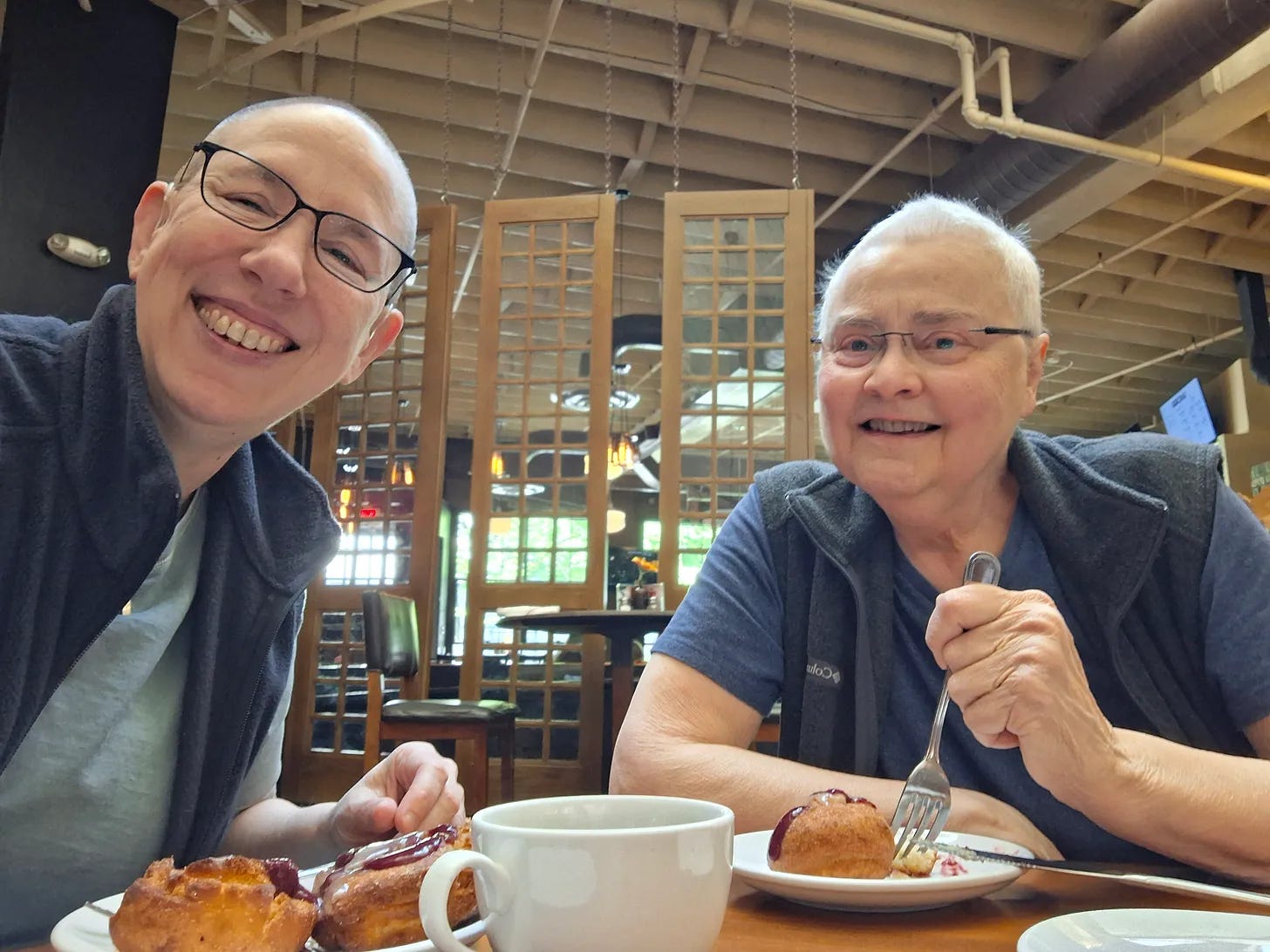
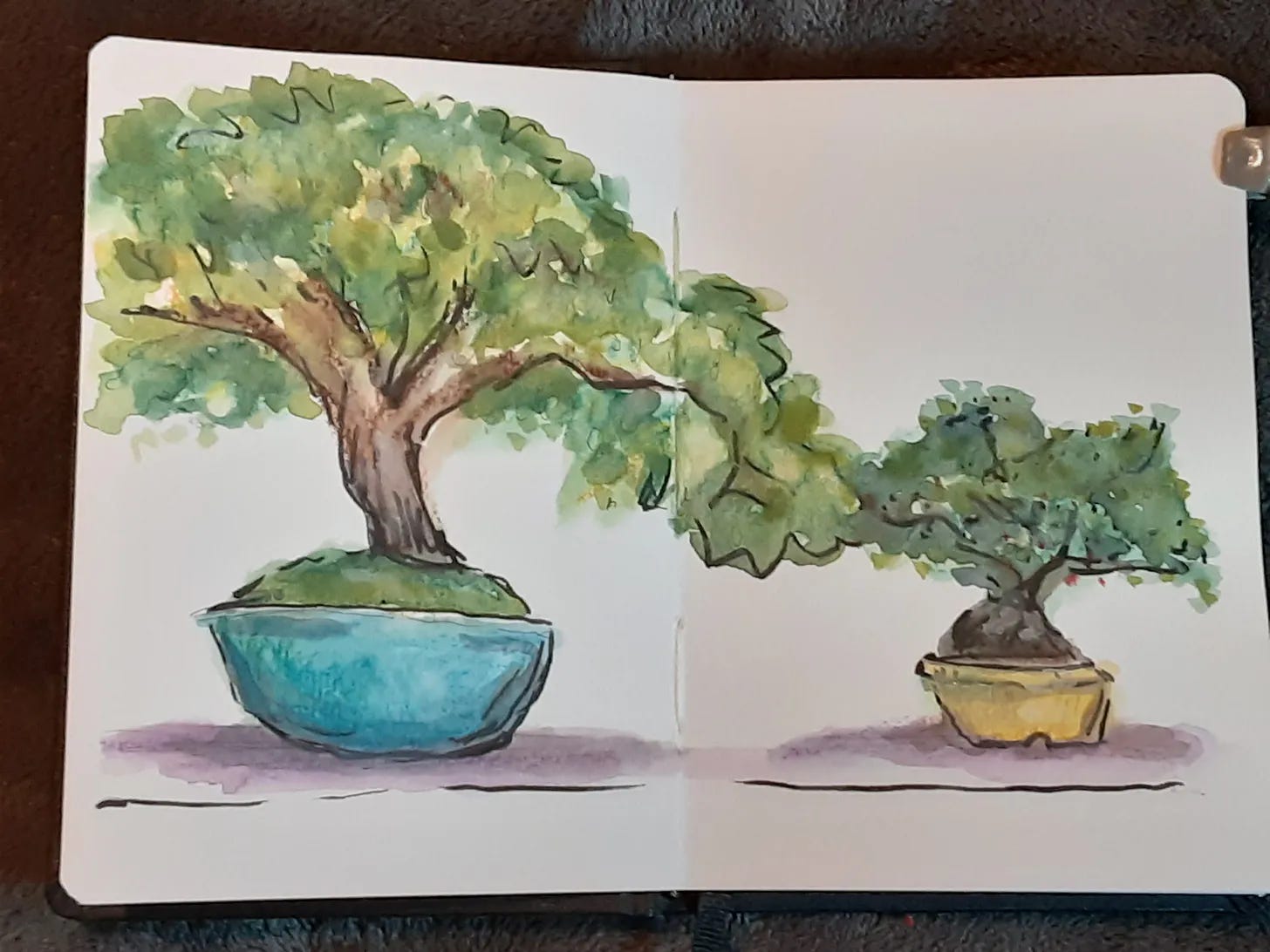
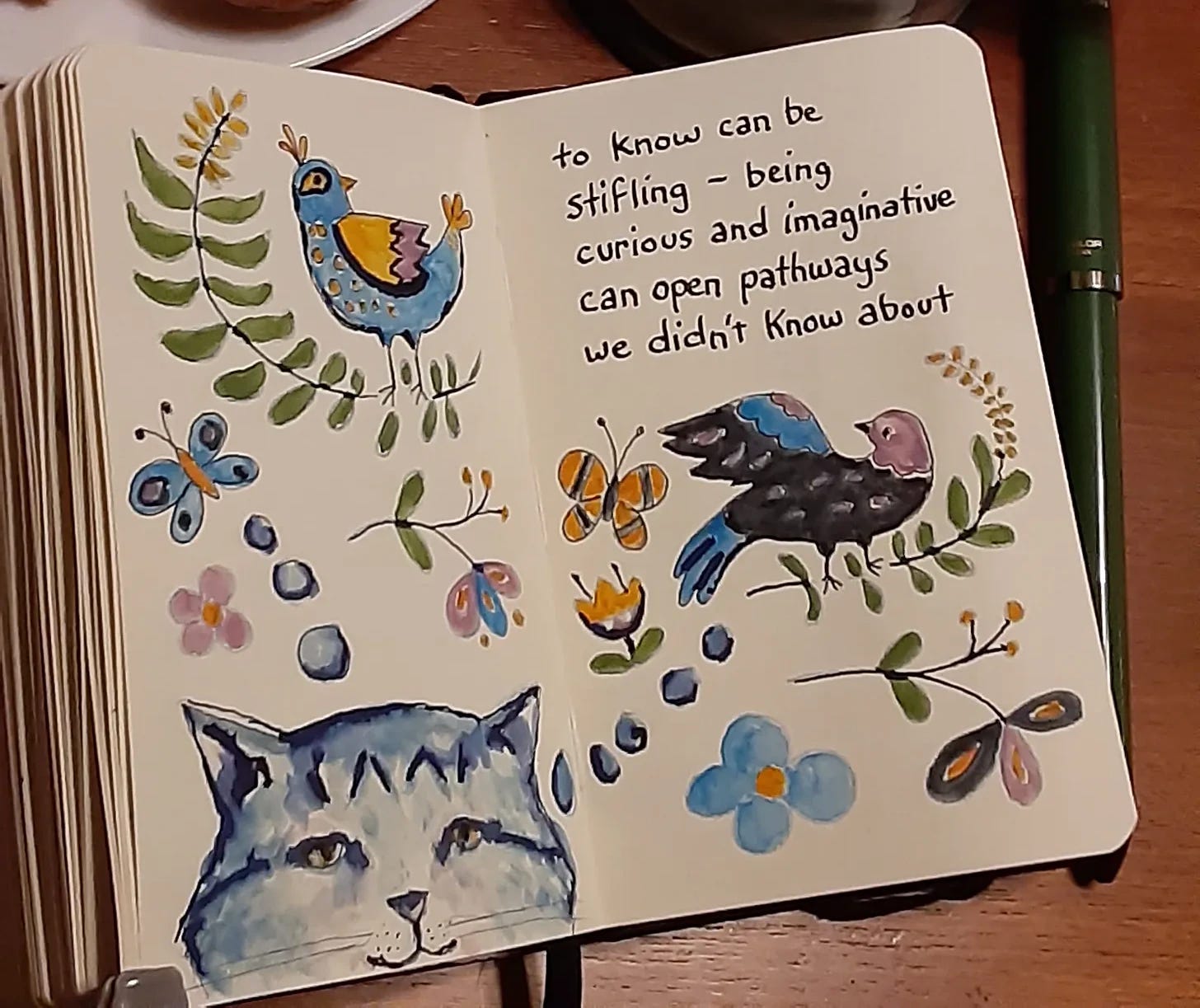
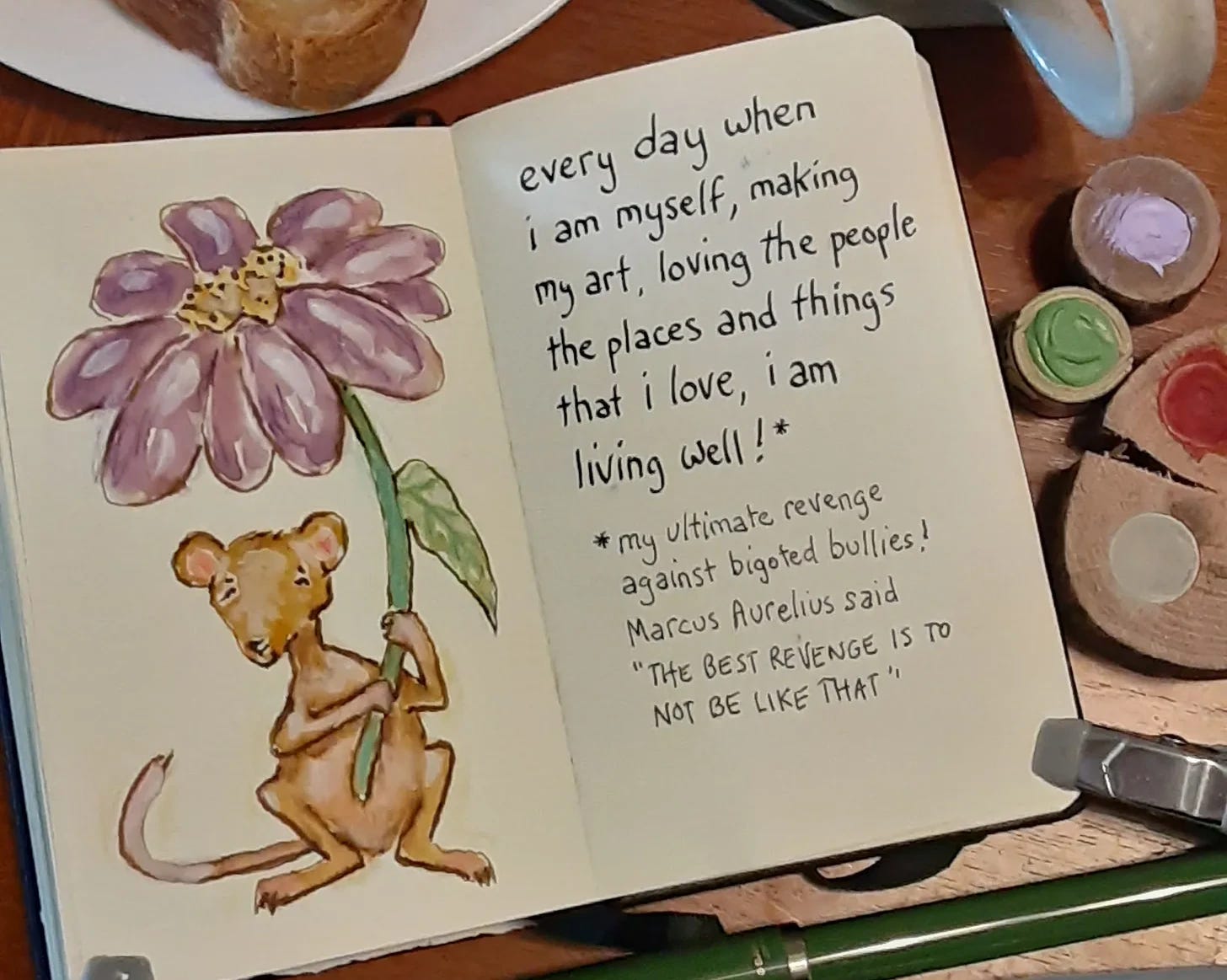
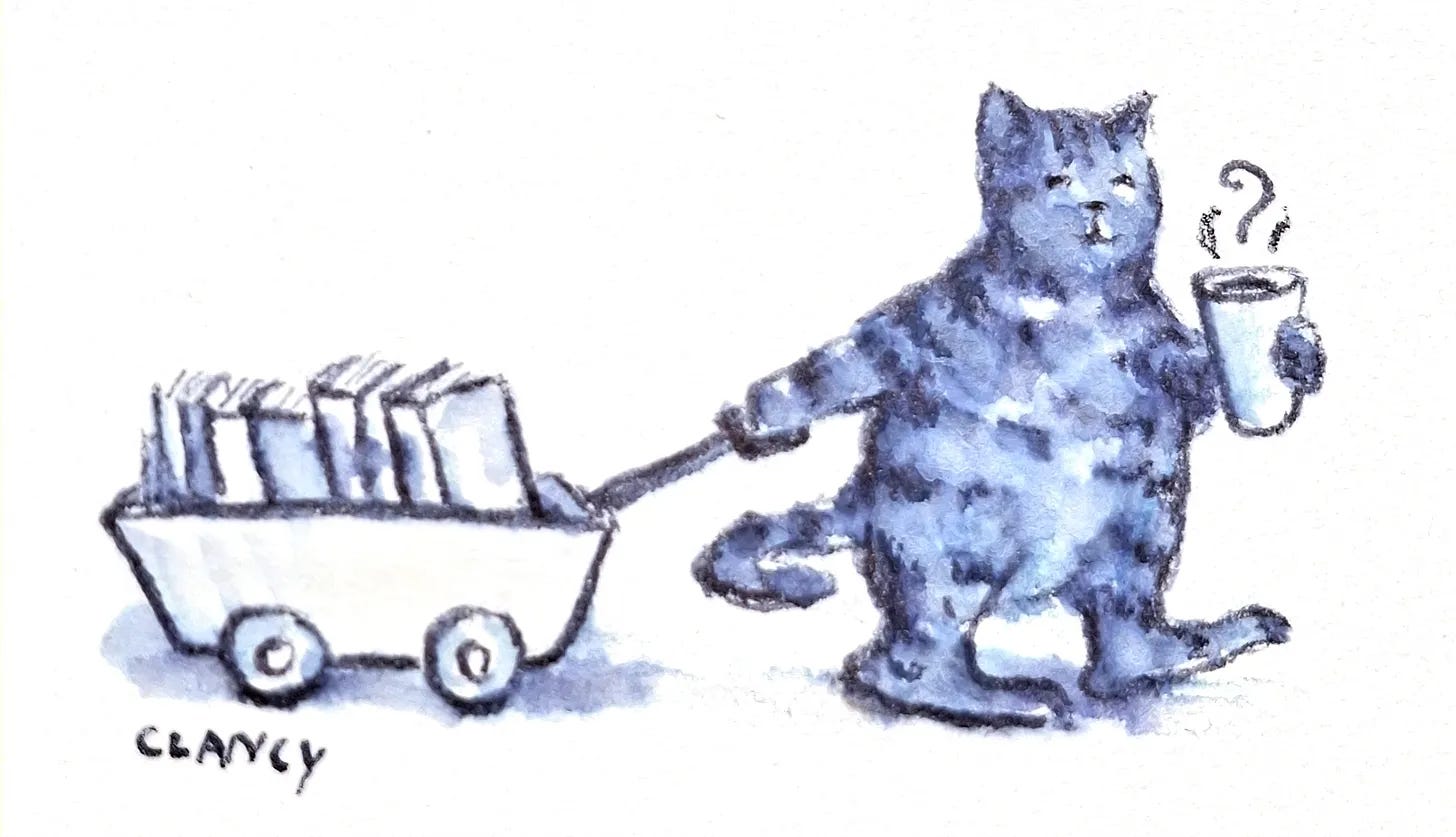
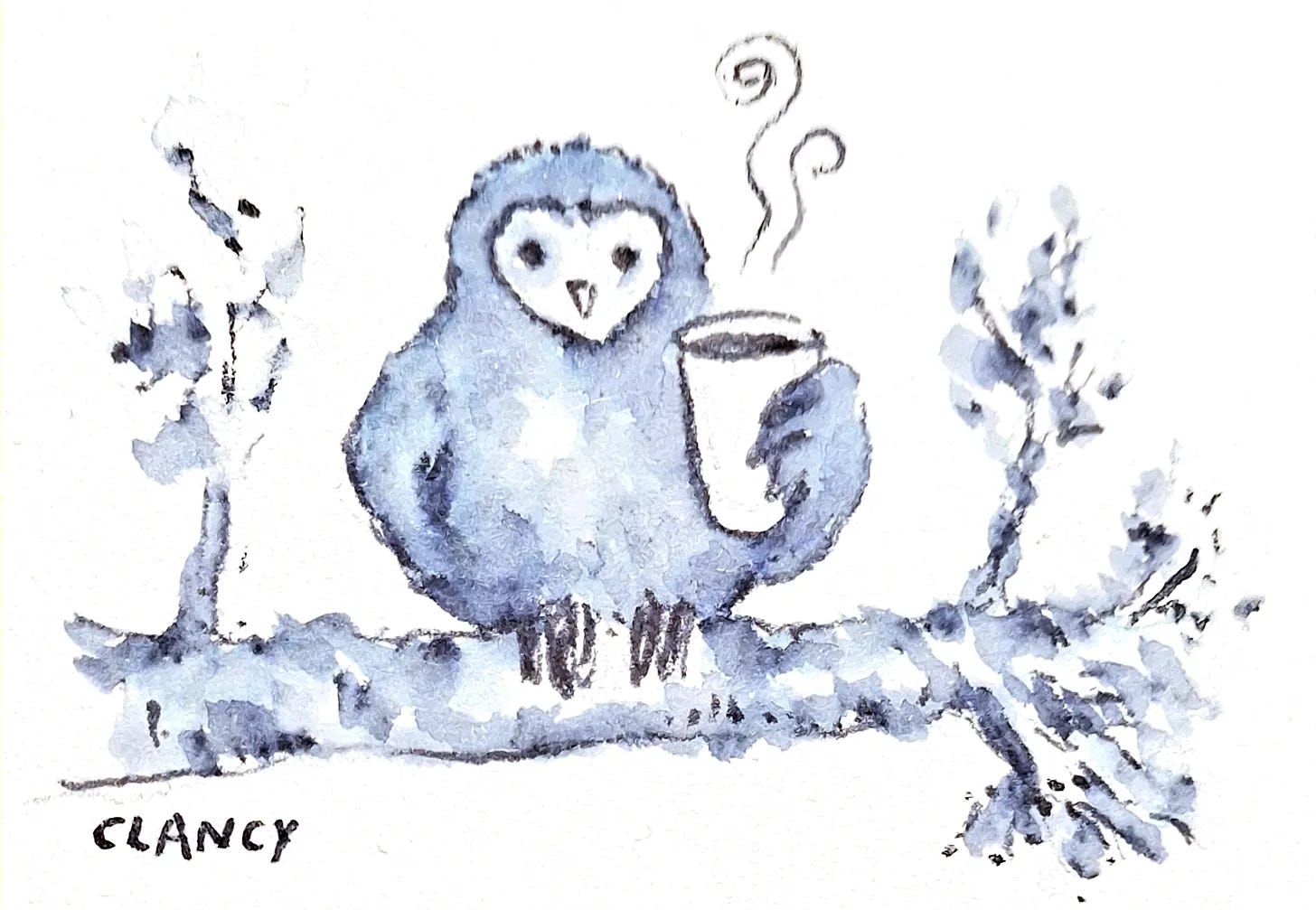
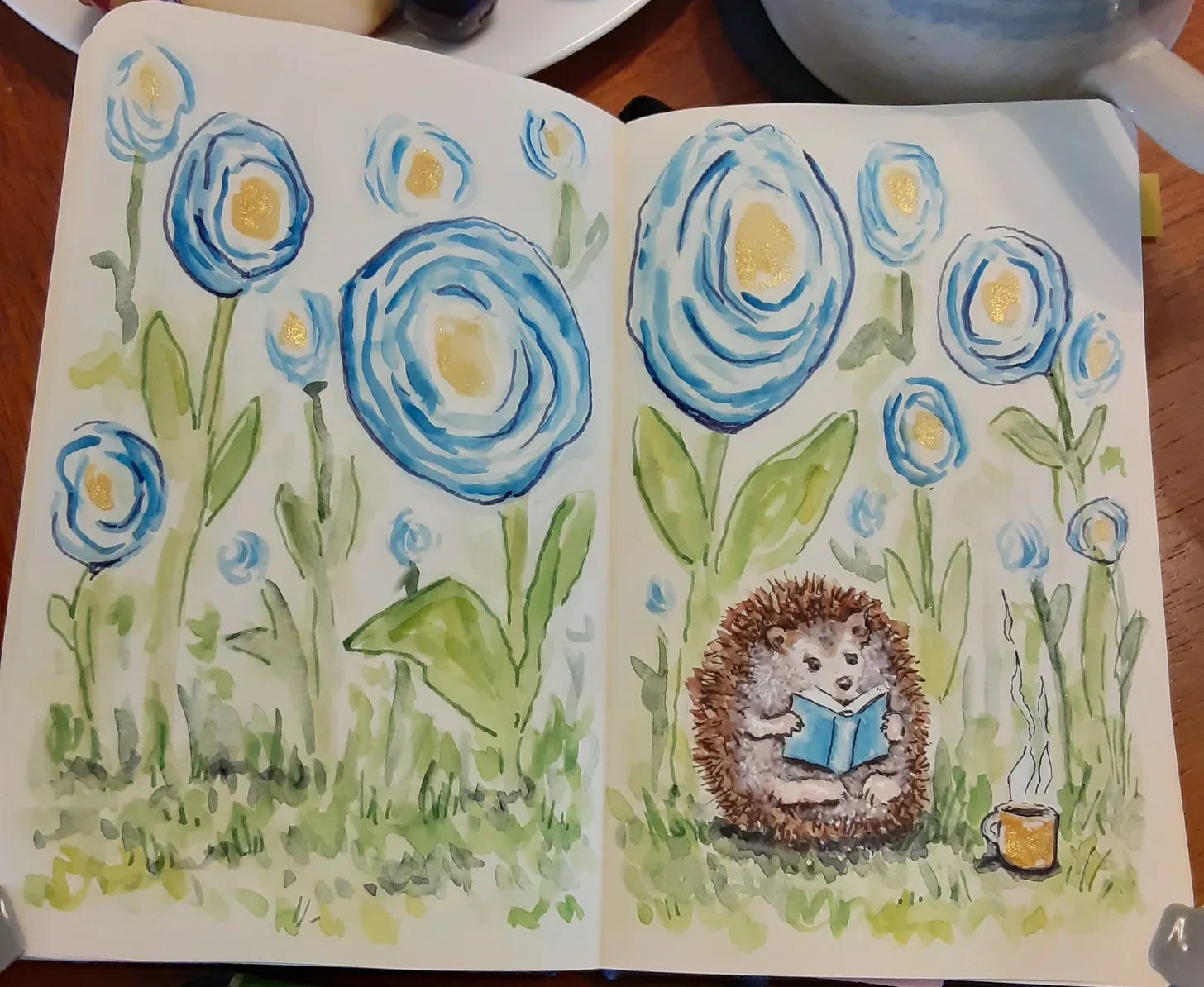

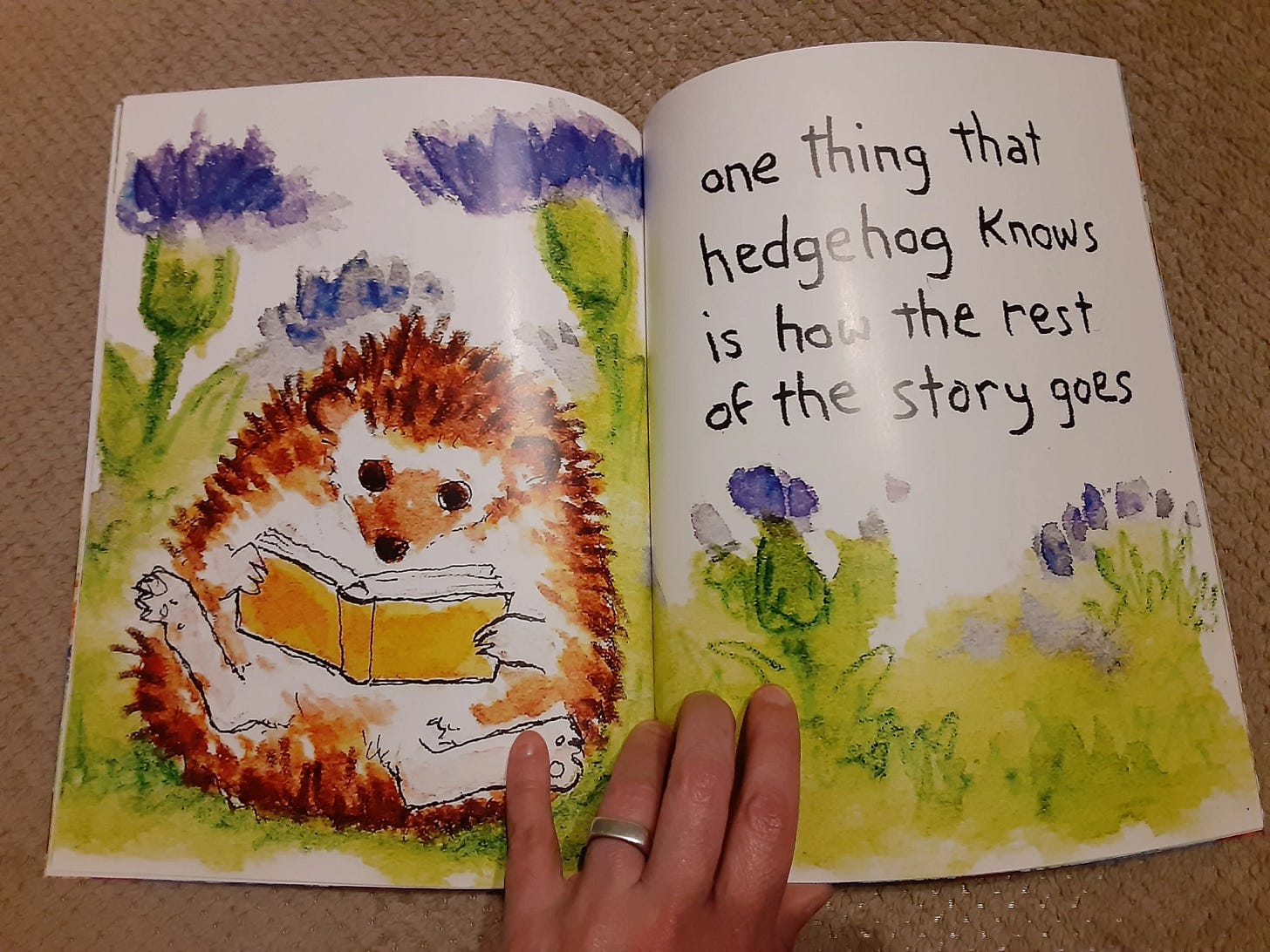


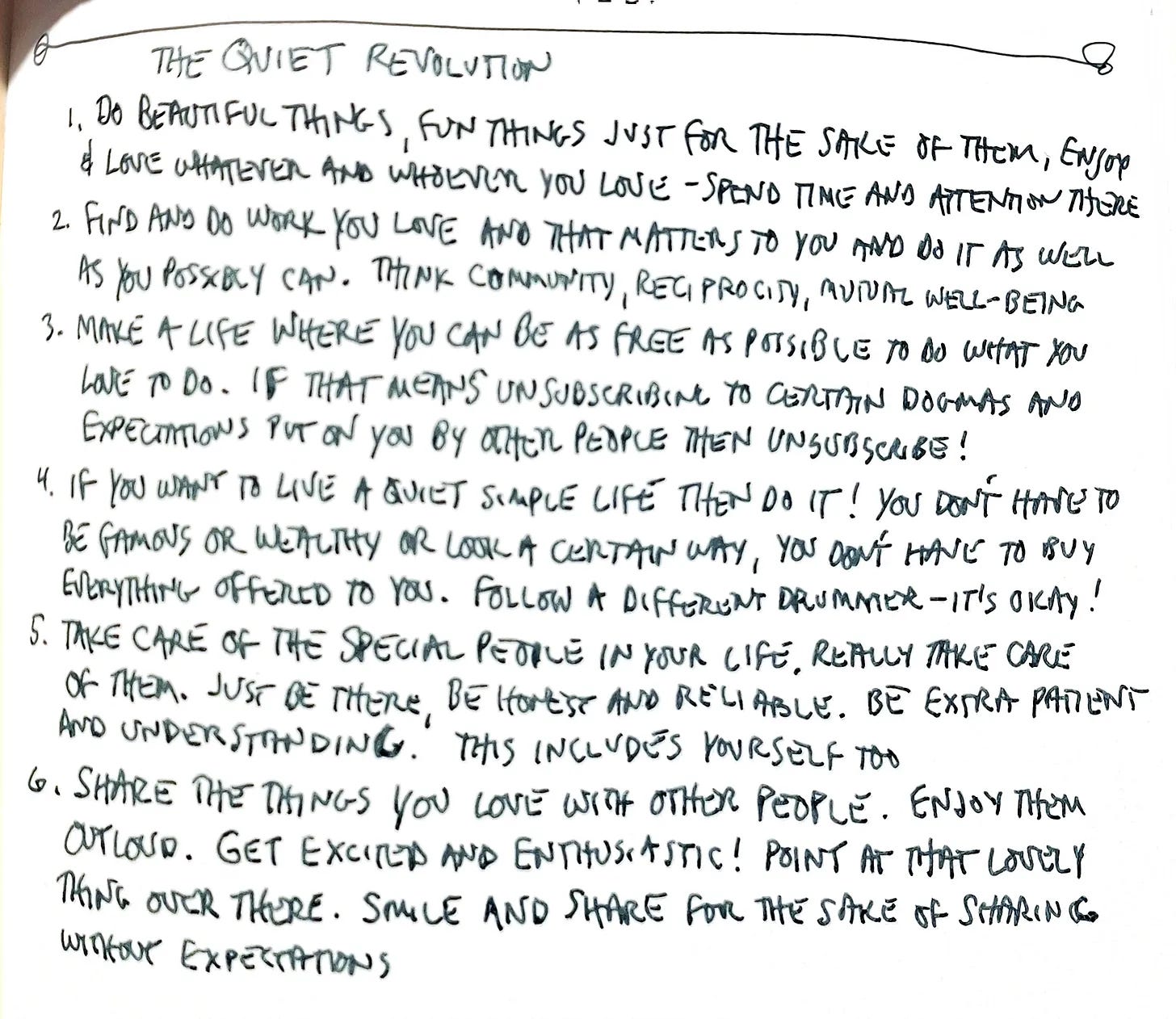


Thank you for this uplifting conversation with Sue! I needed an act of rebellion first thing this morning, so I wrote a pantoum--I feel much better now!
Thank you Allie! And thank you Sue! The questions and answers were all worth reading and knowing!!! Thank you Sue for sharing your life and artist's path so openly. It is like watching you bloom!!! And lastly, thank you for the many links and quotes and memories!!! This post is a keeper.